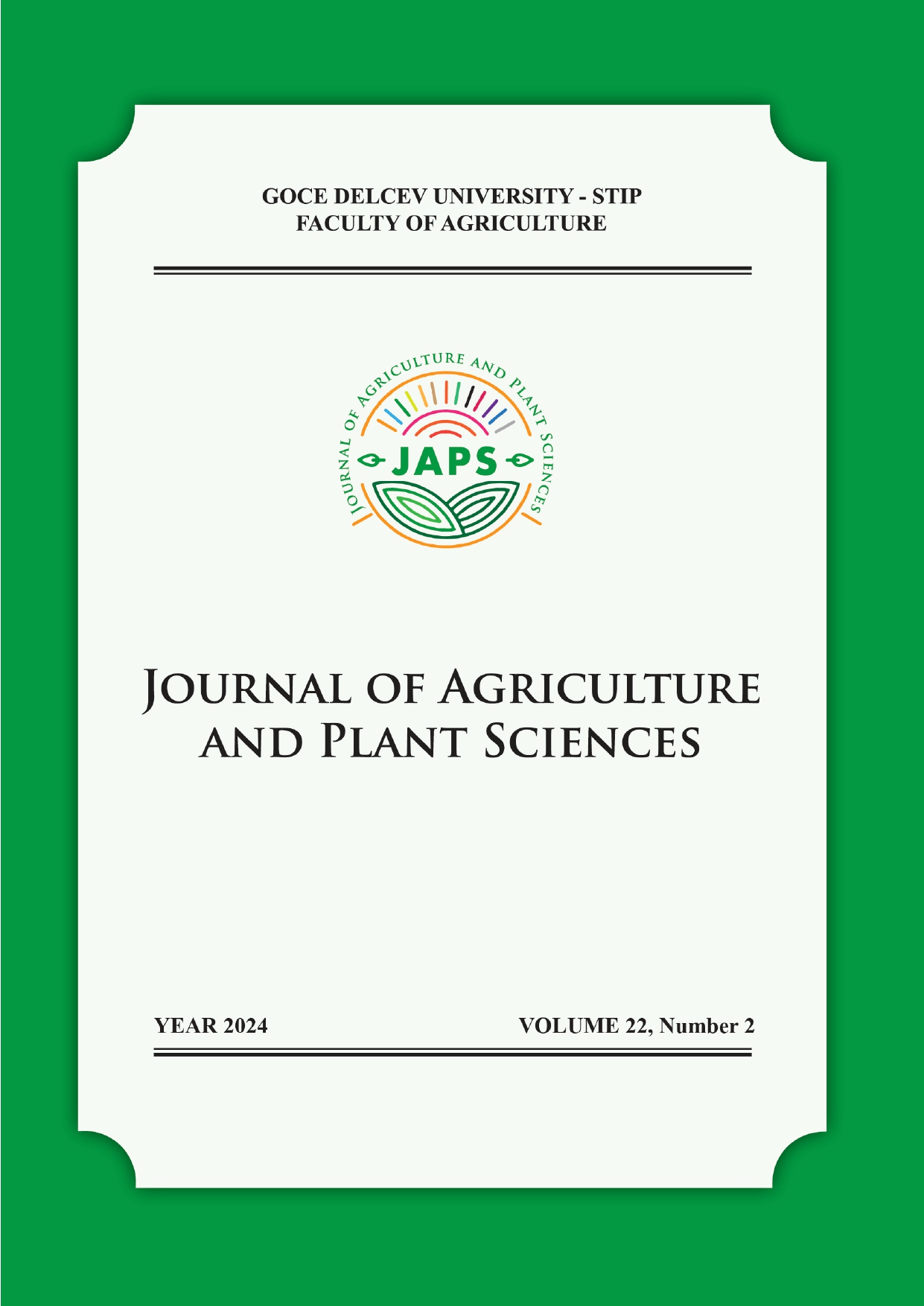IN VITRO EVALUATION OF SOIL Bacillus STRAINS ISOLATED FROM THE BUCIM COPPER MINE FOR BIOCONTROL AGAINST GRAPEVINE DOWNY MILDEW
DOI:
https://doi.org/10.46763/JAPS2422209apAbstract
Plasmopara viticola, the disease that causes grapevine downy mildew, is a major and enduring concern for the grapevine industry globally. It’s challenging to manage using chemical and agricultural methods. For the wine-growing industry, several countries, including North Macedonia, have reoriented their strategies in order to reduce chemical inputs, which have been shown to be toxic and to have a negative impact on the environment. Instead, they are replacing these chemicals with sustainable biocontrol regulations. Bacillus spp. is a well-known plant-protective bacteria with antifungal potential in biocontrol strategies. The aim of this study was to isolate and screen soil Bacillus strains from the Bucim Copper Mine in four seasons with potential applications for biocontrol of this disease. The highest number (3.2 x 105 CFUg-1) of Bacillus spp. was found in autumn, while the lowest number (2.8 x 102 CFUg-1) was found in winter. Out of 18 isolates, 4 showed antifungal activity against Plasmopara viticola. The intracellular metabolites of the isolates B1-19, B2-3, B3-2, B3-4 showed maximum inhibition of 20-32 mm, while only the extracellular extract of the isolate B1-19 showed maximum inhibition of 25 mm against Plasmopara viticola. The moisture content values ranged from 0.9-8.5 % and the pH value ranged from 7.11 – 7.58. The total organic matter values ranged from 4.47 to 4.99 %. Due to the antifungal potential as biological control agents against grape downy mildew, the isolates are expected to enhance integrated pest management systems going forward and maybe reduce the quantity of chemical fungicides used in vineyards.
Downloads
Published
Issue
Section
License
The intellectual property and copyright on the original content of all scientific contributions in the published paper shall remain with the authors. Authors give permission to the JAPS owner to publish the paper. All authors agree to publish the paper under Attribution-NonCommercial-NoDerivatives 4.0 International license (CC BY-NC-ND 4.0).

